Australia is well known as the skin cancer capital of the world and as such we need to know how to protect ourselves against this potentially deadly disease, if not for our own sake then definitely for our loved ones.
Skin cancer is mainly caused by long-term, regular exposure to the sun. While safe sun exposure is a beneficial source of vitamin D, unprotected exposure to the sun’s ultraviolet radiation (UVR) can cause abnormal skin cells to grow. Sometimes these abnormal cells are destroyed by the body’s natural defence systems, but if the body fails to kill the abnormal cells then skin cancers may develop.
Skin is the largest organ in the body and is made up of different layers of cells. Your skin protects your internal organs from injury and disease, helps to regulate body temperature and maintains hydration.
Skin cancer can be categorised into one of the following
Basal cell carcinoma (BCC) which is the most common form making up 75% of all skin cancers;
Squamous cell carcinoma (SCC) which accounts for 20% of all skin cancers;
Melanoma is the most serious type of skin cancer, despite making up only 5% of cancers.
There are also other sun spots that are not skin cancer, but may act as warning signs or indicate the person is prone to skin cancer. These warning signs include flat, fairly large moles, anywhere on the body; red, flattish, scaly areas that may sting if scratched; and raised moles or moles that have clear edges which vary in colour from pale skin through to orange and black.
Freckles are harmless coloured spots that range in size from one to ten millimetres. They indicate that the sun has damaged the skin.
Check your own skin regularly and if you notice a change in size, shape or colour to any spots on your skin, have them checked by your doctor.
Much sunlight damage starts early in life, so hats, shirts, sunglasses, shade and sunscreens are essential protection for children and young adults. People with sun-sensitive skin, who burn and freckle easily, are more likely to get all forms of skin cancer, and must be more careful to check their skin regularly.
Researchers at the Melanoma and Skin Cancer Research Institute (MASCRI) at Australia's Royal Prince Alfred Hospital in Sydney have recently reported the results of a new study examining whether sunscreens offer protection against the harmful effects of UV radiation on the skin's immune system.
More than twenty years ago, researchers discovered UV radiation can damage the effectiveness skin's immune cells. While these immune cells appear to recover their function two to four weeks after the UV exposure, repeated exposures can result in chronic immunosuppression.
The immune system is an important line of defence against melanoma and other skin cancers and it is believed that UV immunosuppression may result in an increased risk of these skin cancers.
Dr. Diana Damian, Dr. Gary Halliday and Professor Ross Barneston have developed a simple and effective method for measuring immune responses in the skin of human subjects.
The study found that even relatively SMALL doses of UV radiation caused significant immunosuppression in the skin of volunteers. Using less UV required to cause mild sunburn, once daily for five days, the skin's immune responses were reduced by an average of 40%.
Interestingly, individuals with darker skin suffered the same damage to their skin’s immunity as those with very pale skin.
Ultraviolet radiation (UVR) is the part of the sunlight that causes sunburn and skin damage, leading to premature ageing and skin cancer. Damage to the skin occurs as soon as skin is exposed to UV radiation; physical signs of over exposure like sunburn are the result of extreme damage.
The effects of UVR on skin are cumulative, so damage builds up even without burning.
There are three types of UVR:
UVA is responsible for causing sunburn and skin damage like wrinkles and discolouration.
UVB is responsible for causing sunburn and skin cancer.
UVC does not reach the earth’s surface but can be produced artificially, for example by arc welding equipment.
UV radiation is measured by the UV Index, which uses a numerical scale of 0 to 10+ to rate the strength of the sun’s UV rays.
The higher the UV Index level, the greater the strength of the sun’s UV rays and the faster the skin will burn. The World Health Organisation developed the UV Index to provide a consistent and international measure of the sun’s UV strength.
Some facts you may not know about UVR include:
UVR can’t be seen, as it is not related to light
UVR can’t be felt, as it is not related to temperature.
High levels of UVR are present all year in Queensland, including winter.
UVR is present on a cloudy day - heavy cloud does decrease UV levels but scattered cloud has little or no effect.
UVR is reflected by light and shiny surfaces (sand, snow, concrete and water), which means more UVR reaches your skin.
As with most diseases, prevention is the key to fighting skin cancer. Protecting your skin from the sun’s harmful UV radiation is the best way to prevent skin cancer.
We have all heard we need to Slip, Slop and Slap, other sun protection practices include staying out of the sun, seeking shade when outdoors, wearing sun protective clothing, hats and sunglasses and using sunscreen.
Wearing sun safe clothing and swimwear can help to protect skin against the harmful effects of UV radiation.
Clothing and swimwear can be tested to identify the ultraviolet protection factor (UPF). The UPF rating is a measure of the protection provided by clothing fabrics.
To protect skin from ultraviolet radiation (UVR), clothing needs to:
Cover the majority of the body such as shirts with collars and long sleeves, long pants and skirts are recommended;
Be made from a fabric with a tight weave;
Be dark in colour like dark orange, red, green, blue and black are recommended;
Have a 30+ ultraviolet protection factor (UPF).
Clothing and swimwear can be tested to identify its ultraviolet protection factor (UPF) rating. The UPF rating is a measure of the protection provided by clothing fabrics. The UPF can be reduced in clothing if the fabric is stretched, wet or over time due to wear.
The Australian/New Zealand Standard for Sun Protective Clothing describes standard laboratory procedures for measuring the UPF of fabrics and for labelling UPF rated clothing. Fabrics are assigned a UPF rating number and a protection category depending on how much UV radiation they block out.
Below is the UPF rating system developed by the Australian Radiation Protection and Nuclear Safety Agency (ARPANSA).
15-24 UPF rating = 93.3-95.9% blocked (good protection);
25-39 UPF rating = 96-97.4% blocked (very good protection);
40 and over UPF rating = 97.5% or more (excellent protection).
The Standard states that the highest UPF rating garments may be labelled with is 50. Garments made from fabrics with ratings higher than 50 are labelled as UPF 50+. Garments with a UPF rating of 30+ are recommended.
To help consumers, all garments made from fabrics tested in ARPANSA recognised laboratories are labelled with a tag showing the garment's UPF rating (as pictured).
Hats that are made of closely woven material, have a darker colour under the brim (to reduce reflection on the face caused by a lighter colour) and cover the top of the head, face, back of the neck and ears offer the most protection from UVR.
There are several types of recommended sun protective hats:
Broad brim hats which have a brim width of 8-10cm and reduce the amount of UVR reaching the face and eyes by up to 50%;
Legionnaire hats which have a peak at the front and a flap that covers the back of the neck and ears;
Bucket-style hats should have a deep crown and wide brim of at least 6cm to protect from UVR.
Caps or visors are not recommended, as they do not provide complete protection to the head, neck and ears.
Wearing sunglasses can substantially protect the eye against both short term and long term exposure to UV radiation. Long term UVR exposure can cause the surface of the eye to degenerate. Cancer on the eye surface and eyelid are strongly linked to UVR exposure.
When purchasing sunglasses, choose:
Sunglass lenses that meet the Australian Standard (AS/NZS 1067: 2003);
Sunglass lenses with an Eye Protection Factor (EPF) rating of either 9 or 10;
Sunglass lenses that eliminate UVR, decrease visible light to a comfortable level and allow adequate vision;
Frames that fit closely to your face and minimise the amount of UVR entering your eyes such as thicker frames, curved lenses or a wrap-around style.
EPF is a measure of the protection provided by sunglasses and other eyewear. EPF has a number scale from 1 to 10 which indicates how well a sunglass lens blocks UVR. Sunglasses with an EPF rating of 9 or 10 transmit almost no UVR.
All sunglasses sold in Australia must be labelled to indicate which AS/NZS 1067:2003 category they comply with. This provides consumers with the necessary information to select the correct sunglasses or fashion spectacles depending on their intended use.
When out in the sun, you are exposed to ultraviolet radiation (UVR), which can burn and damage the skin. UVR is made up of a combination of UVA and UVB rays. Only broad-spectrum sunscreens filter out 96.7% of UVR and protect the skin from both UVA and UVB rays. Sunscreens work by either absorbing UVR (chemical filters) or reflecting UVR (physical blockers).
The Sun Protection Factor (SPF) measures the protection provided by sunscreens. The higher the SPF, the better the protection from UVR. The maximum SPF on sunscreens sold in Australia is SPF 30+. No sunscreen offers complete protection from UVR.
Different types of sunscreen include:
Cream which thicker and usually more expensive than lotions;
Milky lotions which usually contain moisturisers;
Clear lotions and gels are usually alcohol based, less sticky and more drying;
Sprays offer thin coverage, but can be useful for reaching difficult areas;
Zinc reflects UVR, but can leave a residue on the skin;
Toddler sunscreen is suitable for sensitive skin and usually fragrance free.
Like clothing, hats and sunglasses, sunscreen should be used in combination with other forms of sun protection practices.
Use a SPF30+, broad-spectrum, water resistant sunscreen that is labelled 'AUST L' or 'AS/NZS 2604:1998'. This means the sunscreen meets the Australian Standard.
Apply sunscreen liberally and evenly to all exposed skin areas. Allow sunscreen to be slowly absorbed into the skin, rather than rubbing it in completely.
Apply sunscreen at least 20 minutes before going outside. Put it on whenever you are outside or travelling in the car, rather than just when going swimming. You should even use sunscreen in the winter months and on cloudy days.
If using a new sunscreen for the first time, test it first on a small area of skin before applying.
Reapply sunscreen at least every two hours when outdoors, and more frequently if you are sweating, swimming or towelling off.
Use lip balms containing sunscreen.
Protect babies and young children by keeping them out of the sun and by dressing them in hats and protective clothing.
Store sunscreen in a cool dry place, as it deteriorates if exposed to heat or air for long periods of time.
Don't increase the amount of time you spend in the sun because you are wearing sunscreen.
Don't rely on sunscreen alone as your only protection from UVR.
Don't allow yourself or children to get burnt because your sunscreen has worn off – remember to reapply.
Don't use old sunscreen. Sunscreen has a use by date with an average shelf life of two to three years.
Don't leave sunscreen in hot places such as cars, as excessive heat can reduce its effectiveness. Sunscreens can become ineffective if exposed to temperatures over 30degrees.
Use a SPF30+, broad-spectrum, water resistant sunscreen.
Follow the directions, check the expiry date and shake the bottle before using.
Adults should apply approximately one teaspoon of sunscreen per limb to clean dry skin.
When applying sunscreen to children, use a quantity proportionate to the size of the child.
Use sunscreen sparingly on babies.
Ensure all exposed skin is liberally covered with sunscreen. This includes the neck, ears, lips and scalp (if hair is thin). –FMG
Fact Box 1
UV Index
The UV Index is reported by the media in Australia to inform people about the maximum daily level of UVR. It is forecasted by considering the time of day, date, latitude, amount of cloud, altitude, presence of haze and ozone concentration. The UV Index (forecast or live) provides useful information for minimising overexposure to UVR, especially when planning outdoor activities. Live UV Index information, specific to certain locations, can be found on the Internet.
1 to 2 = No protection required
3 to 7 = Protection required
8 to 11+ = Extra protection required
Fact Box 2
Types of Skin Cancer
BCC (75%)
Basal cell carcinoma is the most common form of skin cancers. BCCs normally appear as a lump or scaling area that is red, pale or pearly in colour. A BCC grows slowly, and usually appears on the head, neck or upper body. They may become ulcerated and can be identified as a spot that won’t heal. Each year 125,000 new cases are reported each year in Australia and about half of BCCs recur after five years.
SCC (20%)
An SCC normally appears as a thickened red, scaly spot that may bleed easily or ulcerate. They appear on sites most often exposed to the sun and usually grow slowly over months. If left untreated they can spread to other parts of the body. SCCs make up about 20% of all skin cancers. 20,000 cases of squamous cell carcinoma are reported annually in Australia. About half of SCCs recur after five years.
Melanoma (5%)
Melanoma is the most serious type of skin cancer, despite making up only 5% of cancers. If left untreated, it can spread to other parts of the body.
Melanomas can be either flat or nodular and appear as a new spot or an existing spot, freckle or mole that changes colour, size or shape. A melanoma is generally more than one colour and has an irregular outline.
They grow over weeks to months and can appear anywhere on the body. Each year, over 5000 cases of melanoma are reported in Australia, which has the highest rate of melanoma in the world, and around 1000 Australians will die of this disease.
Fact Box 3
Sun Safety Tips
You can actively advocate for sun protection by:
Dressing yourself in sun protective clothing before you go outside;
Wearing a sun protective hat;
Wearing sunglasses;
Applying sunscreen before you go outside, and to reapply at least every two hours.
Fact Box 4
What’s Available
Sunscreen
BrandProtectionCost($)
| Cancer Council Ezi Clip Sport Sunscreen 50ml | SPF 30+ | $8.95 |
|---|---|---|
| Cancer Council Ezi Clip Everyday Sunscreen 50ml | SPF 30+ | $8.95 |
| Island Tribe Clear Gel 50ml | SPF 30+ | $9.95 |
| Island Tribe Clear Gel 100ml | SPF 30+ | $14.95 |
| Island Tribe Clear Spray 125ml | SPF 30+ | $14.95 |
| Island Tribe Sun Lotion 450ml | SPF 30+ | $29.95 |
| Island Tribe Sun Lotion 100ml | SPF 30+ | $13.95 |
| Island Tribe Face Lotion 50ml | SPF 30+ | $8.95 |
| Island Tribe Lip Balm | SPF 30+ | $4.95 |
Hats
BrandProtectionCost($)
| Cancer Council Lifeguard Hat | Yes | $29.95 |
|---|---|---|
| Cancer Council Boonie Hat | Yes | $26.95 |
| Sun2Sea Legionnaires Hat | UPF 50+ | $34.95 |
Sunglasses
BrandProtectionCost($)
| Cancer Council Range | Yes | from $39.95 |
|---|---|---|
| Euro Angler Ocean | Yes | $59.99 |
| Euro Angler Sailfish | Yes | $59.99 |
| Euro Angler Tailor | Yes | $59.99 |
| Euro Angler Tiger Shark | Yes | $59.99 |
| Euro Angler Overspecs Cover | Yes | $59.99 |
| Euro Angler Metals Dolphin | Yes | $49.99 |
| Euro Angler Metals Mako | Yes | $49.99 |
| Euro Angler Metals Dusk | Yes | $59.99 |
Shirts
BrandProtectionCost($)
| Sun2Sea Ladies Long Sleeve V-neck | UPF 50+ | $59.95 |
|---|---|---|
| Sun2Sea Ladies Long Sleeve Polo | UPF 50+ | $64.95 |
| Sun2Sea Mens Long Sleeve Polo | UPF 50+ | $64.95 |
| Sun2Sea Childrens Long Sleeve V-neck | UPF 50+ | $45.00 |
| Sun2Sea Unisex Long Sleeve Hoodie | UPF 50+ | $74.95 |
Gloves
| Brand | SPF/UPF Rating | Cost($) |
|---|---|---|
| Sun2Sea Gloves | 50+ UPF | $18.95 |
Other
| Brand | SPF/UPF Rating | Cost($) |
|---|---|---|
| Buff Original | SPF 20 | $35 |
| Buff 30+ | SPF 30+ | $40 |
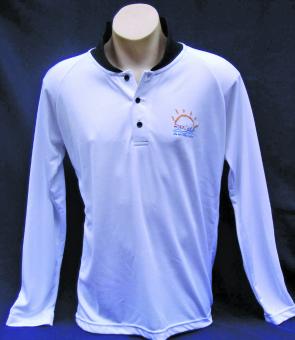
When you spend all day on the water wearing a shirt like this one from Sun2Sea is essential in protecting your skin from the sun.

These hoodies from Sun2Sea are great to protect not only your arms, but your neck and ears from the sun.
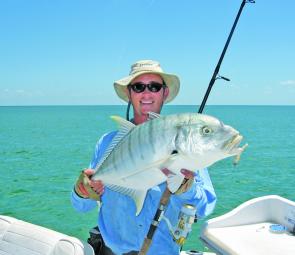
Long sleeve sun shirts, a wide brimmed hat and gloves all offer great sun protection on the water.
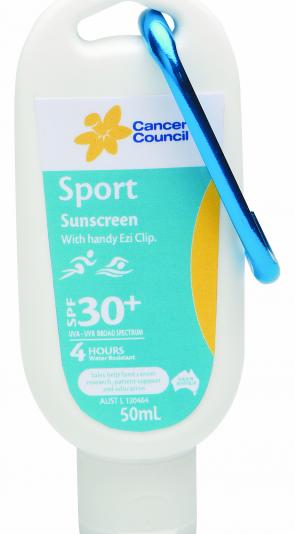
Wearing sunscreen is an essential part of sun protection.
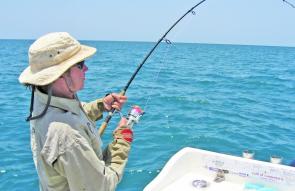
A wide brim hat offers much more protection from the sun than a cap or visor, here you can see Josh’s face and neck are fully shaded.

Sun protection is also important in the winter, as the UV radiation is not conducive to light or temperature.
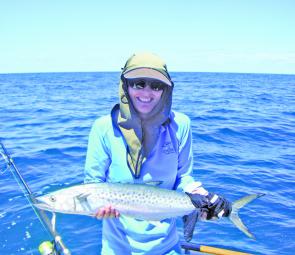
A legionnaires hat provides great protection of the face, neck and ears.
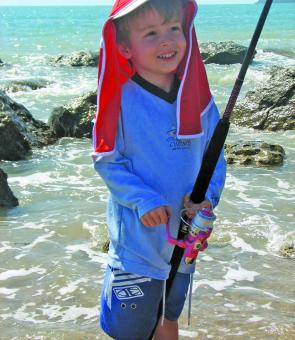
Children should always slip, slop and slap to protect their skin from the sun right from an early age.
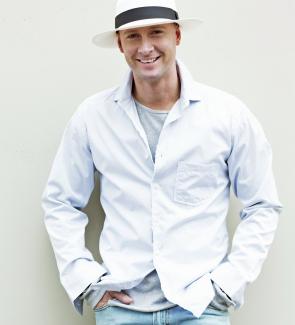
Michael Clarke one of Australia’s leading cricketers is the Cancer Council’s ambassador. He is passionate about preventing skin cancer as he has had two cancers removed from his face. He says, the “experience reaffirmed the importance of protecting myself




